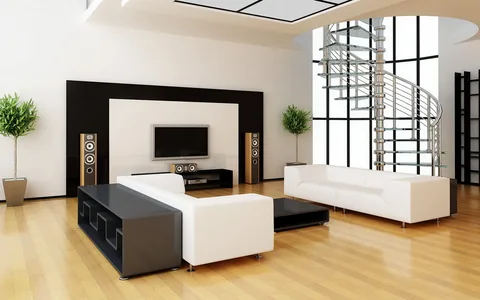Technology has become an integral part of nearly every aspect of our lives, including the field of interior design. From innovative software tools to cutting-edge materials and manufacturing processes, technology has revolutionized the way designers conceptualize, create, and implement interior spaces. In this guide, we’ll explore the diverse role of technology in interior design and how it continues to shape the industry.
Virtual Reality and 3D Modeling
One of the most significant advancements in interior designing technology is the integration of virtual reality (VR) and 3D modeling software. Designers can now create immersive virtual environments that allow clients to experience their designs before they are implemented physically. VR technology enables clients to “walk through” a space, visualize different layouts, materials, and finishes, and make informed decisions about the design process.
3D modeling software, such as AutoCAD, SketchUp, and Revit, enables designers to create detailed and accurate digital representations of interior spaces. These tools facilitate collaboration between designers, architects, and clients, allowing for more efficient communication and idea sharing throughout the design process.
Digital Rendering and Visualization
Digital rendering and visualization software have transformed the way interior designers present their ideas and concepts to clients. With photorealistic rendering capabilities, designers can create lifelike images and videos that accurately depict the intended look and feel of a space. Clients can visualize different design options, color schemes, and furniture arrangements, helping them make informed decisions and providing valuable feedback to designers.
Smart Home Technology
The rise of smart home technology has had a profound impact on interior design, introducing new opportunities for functionality, convenience, and sustainability. Smart home devices, such as thermostats, lighting systems, security cameras, and voice-activated assistants, can be seamlessly integrated into interior spaces to enhance comfort and efficiency. See this: https://youtube.com/shorts/ayJxhsvgXHs
Designers are incorporating smart home technology into their designs by incorporating hidden wiring, discreet mounting solutions, and intuitive control interfaces. These integrated systems allow homeowners to control various aspects of their environment, such as lighting, temperature, and security, from their smartphones or voice commands.
Sustainable Materials and Manufacturing Processes
Advancements in technology have also led to the development of sustainable materials and manufacturing processes that minimize environmental impact and promote eco-friendly design practices. Designers have access to a wide range of sustainable materials, including recycled glass, reclaimed wood, bamboo, and low-emission paints and finishes.
Digital fabrication technologies, such as 3D printing and CNC machining, enable designers to create custom furniture, fixtures, and architectural elements with precision and efficiency. These technologies reduce waste, optimize material usage, and offer greater design flexibility, allowing designers to push the boundaries of creativity while minimizing their ecological footprint.
Online Design Platforms and E-Commerce
The proliferation of online design platforms and e-commerce websites has democratized the interior design industry, making professional design services and curated home furnishings accessible to a broader audience. Designers can connect with clients remotely, collaborate on projects virtually, and source products and materials from around the world with ease.
Online design platforms, such as Houzz, Pinterest, and Instagram, serve as valuable sources of inspiration and information for both designers and clients. These platforms allow users to discover new trends, explore design ideas, and connect with industry professionals, fostering a sense of community and collaboration within the design community. Read more: https://indexnasdaq.com/creative-uses-for-event-carpets-in-any-setting/
Data Analytics and Market Research
Data analytics and market research play an increasingly important role in shaping interior design trends and consumer preferences. Designers can leverage data-driven insights and market intelligence to identify emerging trends, understand consumer behavior, and anticipate future demands in the design industry.
By analyzing data related to consumer demographics, purchasing habits, and lifestyle preferences, designers can tailor their designs to meet the specific needs and desires of their target audience. This data-driven approach enables designers to create more personalized and impactful interior spaces that resonate with their clients on a deeper level.
Conclusion
Technology has revolutionized the field of interior design, empowering designers to create innovative, functional, and sustainable spaces that meet the evolving needs of today’s homeowners and businesses. From virtual reality and 3D modeling to smart home technology and sustainable materials, technology continues to drive progress and innovation in interior design.
As technology continues to evolve and advance, so too will the possibilities for creative expression and design excellence in the field of interior design. By embracing technology and staying abreast of emerging trends and developments, designers can position themselves at the forefront of innovation and lead the way toward a more beautiful, functional, and sustainable built environment for generations to come.


